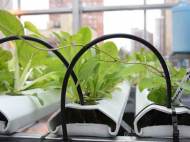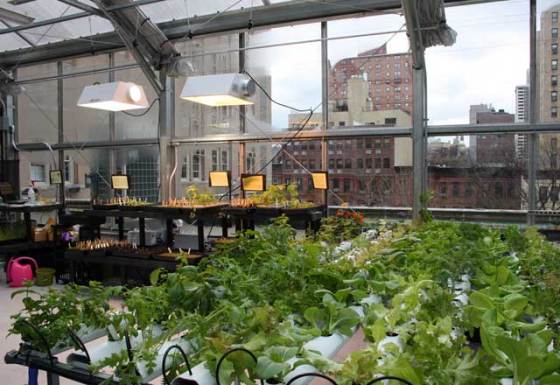inFarming project promotes plant cultivation in existing buildings
 The flat roofs of many buildings as well as some unused floors in some buildings could be used for hydroponic gardening. Aside needed space, the plants growing there could also rely on building‘s waste heat and cleaned waste water. Researchers from the Fraunhofer Institute for Environmental, Safety and Energy Technology (UMSICHT) are developing their solution for these urban landscapes for ‘integrated farming’ named inFarming project.
The flat roofs of many buildings as well as some unused floors in some buildings could be used for hydroponic gardening. Aside needed space, the plants growing there could also rely on building‘s waste heat and cleaned waste water. Researchers from the Fraunhofer Institute for Environmental, Safety and Energy Technology (UMSICHT) are developing their solution for these urban landscapes for ‘integrated farming’ named inFarming project.
“Our goal is to grow vegetables atop existing buildings”, said Volkmar Keuter, certified engineer and project manager at the Fraunhofer UMSICHT in Oberhausen. “Along with vegetables and fruit, we also want to look into growing plants that produce active ingredients for medications.”
Aside increasing area that could be used for agriculture, the method would nearly eliminate the need for transportation, thus lowering the costs and emissions. Waste heat from buildings and additional solar modules would be enough to supply the greenhouses with the energy they need. Semi-transparent solar cells are ideally suited for the purpose because they do let the light go through while creating power.
“Our concept relies on hydroponic systems or hydrocultures. A thin, controlled film of water is all it takes for plants to absorb needed nutrients. The advantage: the yield is ten times higher, and soil is too heavy for many building roofs. That is why we are working on systems to supply plants with nutrients”, said Keuter.
The water consumption can be minimal, thanks to a self-contained system which circulates back cleaned water used for the plants. Multifunctional microsieves and photocatalytic are used to keep the water quality high, and additional nutrients for the plants can be filtered from rainwater and waste water.
“Our cooperation partner – BrightFarm, a US firm – has already completed several projects in New York. The company started out in 2005 with a small research institution on a raft before going on to build greenhouses atop a school for teaching purposes. This year, 1,500 square meters [16,145 square feet] worth of roof space were developed in both the South Bronx and Brooklyn. Here in Germany, we are building an applications lab at the Fraunhofer-inHaus-Center in Duisburg. This is the Fraunhofer innovation workshop for intelligent room and building systems“, said Simone Krause, certified geographer and Volkmar Keuter‘s colleague.
Although the idea of urban agriculture isn’t quite new, it is nice to see changes and growing trend of this idea in many various projects around the world. Unlike garden-bearing structures in plan from designers and architects, inFarming project and some projects we’re going to describe in our future articles are focused to implement this idea in existing buildings.










Very novel method.
Dr.A.Jagadeesh Nellore(AP),India
E-mail: anumakonda.jagadeesh@gmail.com